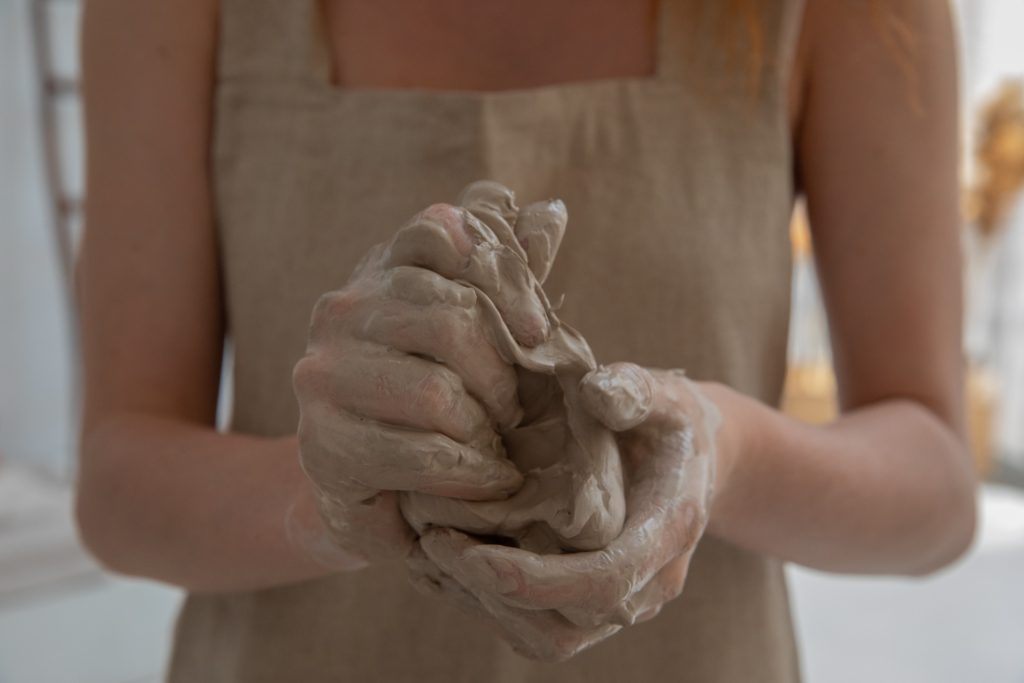If you recently picked up pottery as a hobby, then working with clay is an adventure. After all, there’s nothing quite like turning something as plain as clay into a sculpture of self-expression, regardless of how simple or intricate it ends up being.
But what about the clay itself? Before any pottery is done, clay is simply clay, and for many people, making that clay right at home is also a fun activity in and of itself.
If this sounds like something you’d also enjoy, then you’ve come to the right place.
To help you, this article will go over what you need to make clay, how to make that clay, and everything in between.
Why Homemade Pottery Clay?
If you just started pottery, then it’s understandable to pick up ready-to-use clay and glazes that are available from stores. It’s convenient if pottery for you is a mild interest that you try now and then.
But suppose you’re serious about refining your handiwork and/or have kids at home that are interested in learning all about pottery. In that case, going the homemade clay route is often more rewarding.
Not only is it more hands-on and allows you to familiarize yourself with the craft, but in many cases, it’s also more affordable than using store-bought clay (since you’re using common kitchen ingredients).

Additionally, pottery can also help in a child’s development, so making homemade clay with them is a great bonding and learning activity.
So, without further ado, here’s what you need to get started, as well as two simple homemade clay recipes.
What You Need
- At least 1 cup of flour
- 1 ½ cups of salt
- At least 2 cups of corn starch
- At least 2 cups of baking soda
- One ¼ cups of cold water
- Food coloring of your choice (if desired)
- One tbsp. of mineral oil (optional)
- One teaspoon of liquid vegetable glycerin (optional)
Simple Pottery Clay Recipe #1
This is probably the simplest clay recipe you can do today and generally doesn’t take much time to accomplish. If you have a kid, it’s also a simple procedure that you can let them do with your guidance. For this recipe, you will be using flour, salt, and water.
- Start by mixing the salt and flour in a medium-sized bowl.
- After thoroughly mixing, add a ¼ cup of water. Depending on where you live or how humid your house is, you will need to add more water or less water.
- Continue mixing until you can turn the mixture into a ball, then take it out of the bowl and start kneading. This is now your clay, and you can add food coloring if you want or paint it later.
- You can let this clay air-dry, or you can bake it to make it harder. Should you choose the latter, bake it around 250 degrees Fahrenheit for about 20 minutes. The thicker/bigger the clay is, the longer it will need to stay in the oven.
- Once the clay is ready, you can start molding it into any shape you want. Any piece you make from this clay would take a few days to dry and harden completely, but it should last for years.
Simple Pottery Clay Recipe #2
If you’re looking for a homemade clay recipe that produces a finer finish, this should do the trick.
- Start by taking a saucepan and mixing the cornstarch and baking soda inside while under medium heat. After some time, the mixture will thicken and start looking like mashed potatoes. Once this happens, turn off the heat and let it cool.
- Once the mixture cools down, gently take it out of the saucepan and start kneading it.
- If you want your homemade clay to have a smoother finish, you can add a tablespoon of oil and a teaspoon of liquid vegetable glycerin to the dough. Otherwise, leave it as it is and continue kneading until the tacky feeling is gone.
- If you want to make the dough more appealing to kids, you can also add food coloring of your choice, taking care to wear gloves to not leave any fingerprints on the material.
- Cut the dough into little pieces (or leave it as it is), and it should be ready for pottery use as soon as you want to.
- Take note that if you use this dough immediately for pottery, the finished molds should be baked inside the oven for 15-20 minutes at 250 degrees Fahrenheit, as it wouldn’t harden on its own.
If you plan on storing the homemade clay from these two recipes for later use, it’s a good idea to put them in a zip-top bag before placing them inside the freezer. Once you take them out, they will likely develop moisture on the outside because of the temperature change, so let them dry out first.
If the dough is crumbly or dry, then you can knead it to get your desired consistency. However, if the dough comes out sticky, you will need to roll it out onto a board and add more flour.
Additional Questions and Tips
- Once the pieces are finished, any paint will generally work. However, to get the best results, opt for using high-quality acrylic paint. Just don’t forget to seal the paint with a layer of varnish or paste wax once you’re done painting.
- Sometimes, it’s inevitable to get fingerprints on your piece, especially if you’re a beginner. Luckily, you can remove this by lightly sanding the piece after it’s been baked.
- Did your clay shrink after baking it in the oven? That’s completely normal since baking clay tightens its fibers, causing about 10% shrinkage.
- If you’d like to add stones (like rhinestone) into your pieces, you may do so. The temperature required to dry clay is never strong enough to melt or crack crystals and stones.
Final Thoughts
If you’re new to pottery, then you might mistakenly think that making your clay takes a lot of work. As you can see, however, that’s far from the case.
Making homemade clay is not only fun and rewarding, but it will also help you gain a deeper appreciation for the craft, all while being more economical. Happy clay-making!

